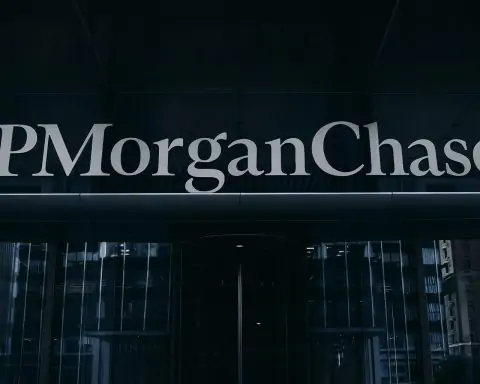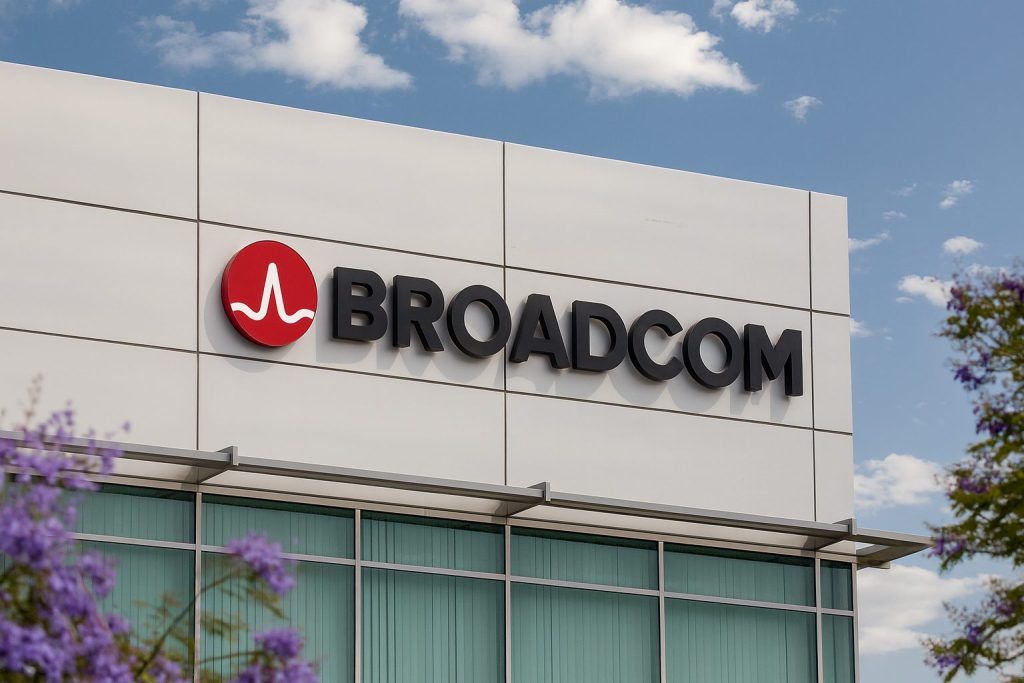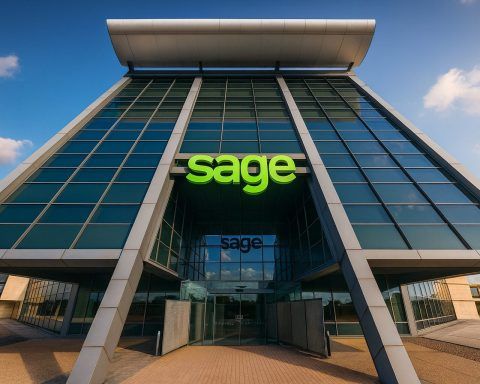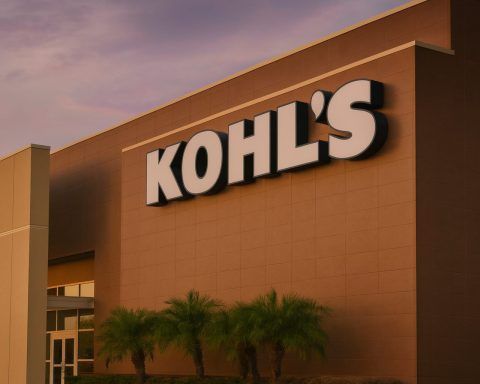London, 27 November 2025 — Halfords Group plc (LON:HFD), the UK’s best‑known motoring and cycling retailer, has reported a steady first-half performance for its 2025/26 financial year, powered by a strong rebound in cycling and continued growth in its garages and motoring club.
For the 26 weeks to 26 September 2025 (“HY26”), group revenue rose 3.3% to £893.3 million, with like‑for‑like (LFL) sales up 4.1%. Underlying profit before tax edged up 1% to £21.2 million, while reported profit before tax slipped slightly to £17.2 million due to non‑underlying costs. [1]
Halfords also confirmed that it remains on track to deliver FY26 underlying PBT in line with consensus expectations of £36–40.7 million, reiterating its full‑year outlook despite a still‑tough consumer backdrop. [2]
At around midday, Halfords shares were trading near 140p, roughly 3% lower on the day, leaving the stock well below its 12‑month high of around 175p but above the lows seen during last winter’s consumer downturn. [3]
Key numbers from Halfords’ HY26 results
Halfords’ interim results and today’s broader trading updates from across the City tell a consistent story: this is a business grinding out progress in a difficult environment rather than posting blockbuster growth.
Headline financials (26 weeks to 26 September 2025): [4]
- Group revenue: £893.3m (HY25: £864.8m), +3.3%
- Like‑for‑like sales:+4.1%
- Retail revenue: £533.2m (HY25: £516.1m), +3.3%, LFL +4.0%
- Autocentres revenue: £360.1m (HY25: £348.7m), +3.3%, LFL +4.3%
- Motoring revenue: £324.3m, essentially flat year on year but +1.1% LFL
- Cycling revenue: £208.0m (HY25: £191.1m), +8.8%, LFL +9.0%
- Gross margin:51.4% (HY25: 49.4%), up 200bps
- Underlying PBT: £21.2m (HY25: £21.0m), +1%
- Reported PBT: £17.2m (HY25: £17.8m), reflecting one‑off costs
- Underlying basic EPS: 7.9p (HY25: 7.6p), +3.9%
- Net cash: £18.6m (HY25: £1.3m), after £27.6m of free cash generation
- Interim dividend: 3.0p per share, unchanged year on year
The uplift in profit is modest in percentage terms, but it comes against a backdrop of significant wage and cost inflation, including increases in the UK National Living Wage and changes to National Insurance, which have pushed up labour costs across the retail sector. [5]
Crucially for investors, Halfords also reported stronger gross margins thanks to its “Better Buying” programme and a deliberate tilt away from lower‑margin products, partly offsetting higher operating expenses. [6]
Cycling is back in gear
If HY26 had a single headline story, it was cycling.
After several post‑pandemic years in which bike sales normalised from the boom of 2020–21, Halfords is now seeing a clear recovery:
- Cycling LFL sales rose 9%, outpacing the wider market and helping offset more muted growth in some motoring categories. [7]
- Cycling revenue reached £208m, up from £191.1m a year earlier. [8]
- Management highlighted “fantastic” performance in children’s bikes and a strong showing from performance brand Tredz, which delivered double‑digit growth. [9]
A warm, dry UK summer and a recovering discretionary spend in certain categories also helped push customers back into stores and online to upgrade or replace bikes. [10]
From a strategic perspective, cycling remains important not just for revenue but for differentiation. Halfords continues to lean heavily on own‑brand ranges such as Carrera and Boardman, which offer higher margins and help reinforce its positioning as a cycling specialist rather than a generalist retailer. [11]
Pivot to services: Fusion garages and a 6m‑strong Motoring Club
Beyond bikes, Halfords is pushing hard on its multi‑year transformation from a traditional retailer into an omnichannel motoring services group.
Two pillars of this shift took centre stage in today’s updates:
Fusion garages: 79 sites now, 150 targeted by FY27
The Fusion format links local Halfords retail stores with nearby Autocentres and mobile vans, routing work to whichever site can serve the customer best and most profitably. [12]
Key points:
- 79 Fusion locations are now trading, with management reiterating a target of around 150 by FY27. [13]
- The format is expected to double garage‑level profitability and pay back the capital investment within roughly two years once the network build‑out is complete. [14]
- Halfords said its consumer garages delivered c.8% LFL sales growth, even as the wider tyres market remains weak, with growth skewed towards higher‑margin service, maintenance and repair work. [15]
Garages and motoring services are now the true engine of the group. Management and third‑party coverage today highlighted that motoring now represents roughly 80% of Halfords’ overall sales, when you include Autocentres and motoring‑related retail, underlining how far the company has moved away from its old “car parts and bikes” image. [16]
Halfords Motoring Club nears 6 million members
The Halfords Motoring Club – the retailer’s subscription‑style loyalty programme – continues to grow rapidly and is emerging as a powerful profit lever:
- Total membership is now close to 6 million, up again over the half. [17]
- More than 400,000 members pay for Premium tiers, generating roughly £20m in annual subscription revenue. [18]
- Premium members spend around three times as much as non‑members and exhibit much higher cross‑shopping between garages, mobile services and stores. [19]
For shareholders, that combination of recurring subscription income and higher spend per member is particularly attractive. It offers greater revenue visibility and underpins the margin expansion evident in today’s figures.
Halfords also reiterated that it is investing heavily in data and digital capabilities to deepen personalisation and improve marketing efficiency – a theme CEO Henry Birch returned to repeatedly, both in the RNS and in media commentary today. [20]
Margins, cash and Coventry: operational clean‑up continues
Even with top‑line growth in the low single digits, Halfords managed to deliver a meaningful improvement in profitability metrics:
- Gross margin increased 200bps to 51.4%, driven by better buying, mix improvements and a greater contribution from services. [21]
- Underlying EBITDA was broadly flat at £89.5m, while underlying EBIT held steady at £26.4m, reflecting the offsetting impact of higher operating costs. [22]
- Operating costs rose about 7.9% to £433m, largely due to wage and general inflation, but were partly mitigated by ongoing cost‑saving initiatives. [23]
One operational headache that had been worrying some investors – the problematic warehouse management system at the Coventry distribution centre – is now largely resolved:
- The Coventry DC is back to normal efficiency, with related non‑underlying costs of £3.1m in the first half, at the lower end of previous guidance. [24]
On the balance sheet:
- Halfords generated £27.6m of free cash flow, moving from a near‑flat net cash position last year to £18.6m net cash this half. [25]
- The board maintained the interim dividend at 3.0p, signalling confidence without overstretching capital returns at a time when the group is still investing heavily in digital, brand and its garage estate. [26]
Management also stuck to its guidance for full‑year capital expenditure of £60–70m, much of which is earmarked for Fusion conversions, technology, and customer experience upgrades. [27]
Strategy, leadership and governance updates
Today’s HY26 announcement doubled as a broader strategy and investor day, with Halfords publishing a detailed interim results presentation and hosting a strategy update for analysts and retail investors. [28]
Several strategic and governance points stood out:
- The group reaffirmed its three‑phase strategic framework – often described externally as “Optimise, Evolve, Scale” – focusing initially on improving returns, then broadening the proposition, and finally scaling services and digital capabilities. [29]
- Sarah Haywood, formerly global CIO at Carlsberg, has joined Halfords as Chief Information Officer, underscoring the importance of technology and data to the growth plan. [30]
- Chair Keith Williams will step down from the board by the September 2026 AGM, giving the company nearly a year to manage succession in an orderly way. [31]
This year is also the first full reporting period for new CEO Henry Birch, who joined in 2025 following the departure of long‑time chief executive Graham Stapleton. Birch, a veteran of The Very Group, Rank and William Hill, is widely viewed as bringing deep multi‑channel retail and data‑driven marketing experience to the business. [32]
Market reaction: solid numbers, muted share price
Although the operational update was broadly positive, the share price reaction on the day has been muted to negative.
- Around lunchtime, Halfords shares were trading near 139–140p, down roughly 2–3% versus Wednesday’s close. [33]
- Some commentary noted that, while the results were solid and in line with expectations, investors appear to have wanted a bolder growth acceleration or more aggressive capital returns to re‑rate the stock. [34]
From a longer‑term perspective, Halfords’ own share‑information page shows an open of around 149.8p and a 12‑month high of roughly 174.6p over the last year, meaning today’s price still bakes in a fair amount of caution about the UK consumer and the pace of the services transformation. [35]
What today’s Halfords (HFD) news means for investors
Not financial advice. This article is for information and news purposes only. Always do your own research or speak to a regulated adviser before making investment decisions.
For existing or prospective investors tracking Halfords Group plc and the HFD share price today, several themes emerge from the 27 November 2025 news flow:
The positives
- Resilient trading in a tough environment
Low‑single‑digit revenue growth, a 200bps margin uplift and higher underlying profit while labour and energy costs are still elevated is a respectable outcome, especially given ongoing pressure on UK consumer spending. [36] - Clear evidence the strategy is working
Cycling is growing again, garages are gaining share in service and repair, and recurring subscription revenue from the Motoring Club is scaling nicely. Collectively, these give Halfords more defensive, needs‑based revenue and reduce reliance on purely discretionary purchases such as big‑ticket bikes. [37] - Balance sheet strength
Moving to nearly £19m net cash, while still paying a dividend and investing in capex, gives Halfords flexibility if conditions worsen – or if attractive bolt‑on acquisitions in motoring services emerge. [38] - Data and digital upside
The appointment of a heavyweight CIO and repeated emphasis on tech and data suggest that the “next leg” of the story could be margin accretive: better targeting, smarter pricing, and more efficient operations layered on top of an already sizeable customer base and 6m‑strong Motoring Club. [39]
The watch‑outs
- Top‑line growth is steady, not spectacular
Revenue growth in the low single digits and only 1% growth in underlying PBT will not excite growth‑oriented investors, particularly when compared with some higher‑growth online or niche automotive players. [40] - Inflation remains a drag
Management is still battling wage and broader cost inflation. While Better Buying and mix improvements are helping today, any renewed spike in costs could squeeze margins again unless offset by further price or efficiency gains. [41] - Execution risk in Fusion rollout
Scaling Fusion from 79 to 150 sites by FY27 and doubling garage profitability is a big operational ask. Any delays, cost overruns or customer‑experience issues could slow the pace of profit growth that the market currently expects. [42] - Macroeconomic uncertainty
Today’s results land against the backdrop of a fresh UK Budget and ongoing debate about the strength of UK consumer demand. While Halfords’ mix is more needs‑based than many retailers, weakness in big‑ticket discretionary items could still weigh on cycling or accessories if conditions deteriorate. [43]
Bottom line
Taken together, today’s 27 November 2025 Halfords news flow paints a picture of a company:
- steady rather than spectacular on growth,
- increasingly service‑led and subscription‑supported,
- with improving margins and a cleaner balance sheet,
- but still facing macro headwinds and the usual execution risks that come with a major transformation.
For readers watching Halfords Group plc (HFD) on Google News or in their brokerage apps, the key things to monitor from here will be:
- Whether cycling’s 9% LFL growth proves sustainable into the spring/summer 2026 season;
- How quickly Fusion garages are rolled out and whether they deliver the promised step‑change in profitability;
- Continued growth and monetisation of the Motoring Club; and
- Any changes to FY26 guidance at the next scheduled trading update in April 2026. [44]
Until then, Halfords looks like a classic “steady compounder” story rather than a hyper‑growth play – one where returns may depend as much on entry price and patience as on the next quarter’s like‑for‑like sales.
References
1. www.halfordscompany.com, 2. www.halfordscompany.com, 3. www.sharecast.com, 4. www.halfordscompany.com, 5. www.sharecast.com, 6. www.halfordscompany.com, 7. www.halfordscompany.com, 8. www.halfordscompany.com, 9. www.independent.co.uk, 10. www.independent.co.uk, 11. www.halfordscompany.com, 12. www.am-online.com, 13. www.am-online.com, 14. www.am-online.com, 15. www.am-online.com, 16. www.am-online.com, 17. www.am-online.com, 18. www.am-online.com, 19. www.am-online.com, 20. www.halfordscompany.com, 21. www.halfordscompany.com, 22. m.investing.com, 23. m.investing.com, 24. www.halfordscompany.com, 25. www.halfordscompany.com, 26. www.halfordscompany.com, 27. www.halfordscompany.com, 28. www.halfordscompany.com, 29. www.reuters.com, 30. www.halfordscompany.com, 31. www.halfordscompany.com, 32. www.am-online.com, 33. www.halfordscompany.com, 34. www.proactiveinvestors.co.uk, 35. www.halfordscompany.com, 36. m.investing.com, 37. www.am-online.com, 38. www.halfordscompany.com, 39. www.halfordscompany.com, 40. www.halfordscompany.com, 41. m.investing.com, 42. www.am-online.com, 43. www.theguardian.com, 44. www.halfordscompany.com










